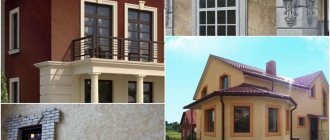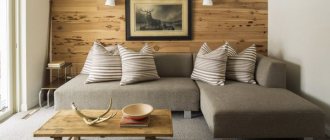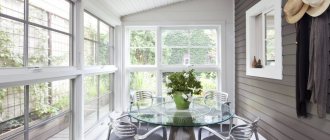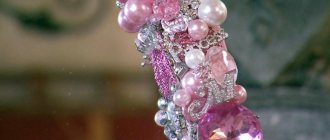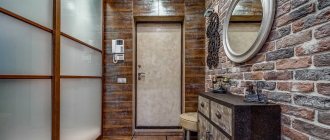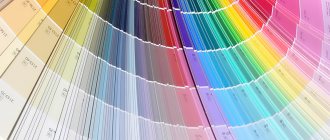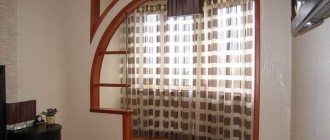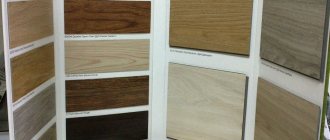Recommendations for making phytowalls at home without huge costs.
Phytowall is an original method of decorating the walls of an apartment, which uses so-called vertical gardening. This method of modifying living space is good because it is well suited for both apartments and houses.
And although until recently it was believed that only a professional could make a vertical garden in a residential area, at the moment, even a novice gardener can easily cope with this task. The main thing is to be able to properly make a module for plants, as well as choose the right flowers. We will talk about how to make a phytowall for your home or apartment with your own hands in our article.
What is phytowall
The phytomodule and phytowall in the interior are a ready-to-use structure on a plastic or other durable base, with fresh flowers and decorative elements planted in special recesses.
At your discretion, the structure can be equipped with an automatic watering system, connection to an alarm system or a smart home panel. The parameters of such decor can vary from 0.5 to 5 m2, depending on the size of the home and the financial capabilities of the owners.
Varieties of vertical facades
A variety of vertical facades simply means ways of arranging and fastening the constituent plants.
Vertical facades are:
- Modular facades are neat plastic or metal boxes or special textile pockets. Plants must be planted separately in each pocket for the phytowall, and then the elements are grouped. This option can be compared to a constructor.
- Carpet gardens - basically a single piece of fabric is used, on which there are many textile pockets. For the base, polymer fiber is used.
- Pallets are a wooden structure in which various plants are planted. If you look at it in appearance, they seem to be peeking out between the slats.
- Paintings or panels - to create such a masterpiece, a metal, polymer mesh or containers with plastic cells are used. After planting all the plants, the overall composition resembles a painting.
Types of decorative details of a “green wall”
Modern interior design has many faces. There are several types of phytowall in an apartment:
- Vertical phytowall. This is a voluminous, integral composition in which plants are placed in niches designated for them. Often these are “green” islands, which are located in one place and do not require movement.
- Phytomodules for vertical gardening are made according to the previous system, but their main difference is their compactness and the ability to be transported from place to place.
- "Green Picture" These are small-sized elements, and their use is similar to the use of ordinary artistic canvases.
- Mobile phytowall. It is used in the form of a self-sufficient screen or even a door when using territory zoning. Due to the specific use of decor, its service life is shorter than that of vertical gardening. However, such a fence can enliven any home and arouse the interest and admiration of guests.
- Ceiling type. The name determines its location. The ceiling or its sections are decorated. Often used in the kitchen or winter garden.
Interesting! The choice of shape depends only on your idea. The basis for flights of fancy and the arrangement of greenery can be columns, cube paintings, and round flower beds.
How to make a structure for a phytowall, phytomodule in an apartment or house: diagram
Design for a phytowall: diagram
I would like to say right away that making a phytomodule at home is a rather labor-intensive process. But still, if you spend money on quality materials and show a little patience, you will eventually be able to enjoy a man-made garden in your own home for a very long time. Now let's figure out what you will need to carry out the work.
So:
- Make sure you have material on hand from which you can later make a durable frame. Wooden boards or slats, plastic pipes or aluminum corners are ideal for these purposes. In principle, all of the above materials are durable and ideal for creating a frame. But still, for example, it is best not to use an aluminum profile for the manufacture of large-sized phytomodules, as it may bend slightly under heavy load.
- Separately, I would like to say about the moisture-resistant canvas, which will clean the walls of the home from moisture. Of course, if you want to save money, you can easily use ordinary polyethylene. But as practice shows, due to the fact that it interferes with normal air circulation, after some time mold still appears on the walls. In view of this, it will be better if you spend a little more and buy polycarbonate or PVC sheeting.
- In order to make the right cell for planting plants, you will need a material that is difficult to rot and special soil. Therefore, be sure to also buy high-quality felt, as well as hydroponics with a small addition of expanded clay.
Felt fabric folding pattern
Ready-made pockets for planting plants
Recommendations for making phytowalls:
- First of all, decide what size phytomodule you want to make. If you don’t want to end up redoing it, then you can draw the shape of the vertical garden on the wall, and then measure the exact dimensions. Having received the data, start making a frame from wood, plastic or aluminum. Keep in mind that it doesn't have to be a simple square or rectangle. It must be reinforced with vertical and horizontal transverse ones. Treat the finished frame with water-repellent agents and begin making pockets for planting plants.
- Take felt fabric and form it into the desired number of pockets. To begin, measure out a piece of size that will exactly match the dimensions of the frame. Next, take a piece 3 times larger and attach it to the previously cut one, and fold it so that you get folds of the same size. Secure everything with pins and stitch them so that you get pockets of the same size.
- Cover the frame with waterproof material (film or PVC cloth) and attach felt pockets to this structure. If the frame is wooden, you can use small nails. If you used an aluminum profile to make it, then you will need small screws.
- At the final stage, secure the phytomodule to the wall using larger screws and you can begin connecting the irrigation system. If the phytowall is placed in a room into which there is practically no daylight, then you will definitely need to place artificial light sources near it, which can easily be turned in the right direction. After all this is done, the pockets can be filled with special soil and plants can be planted.
Advantages of using “green” modules
This design has many advantages not only from an aesthetic point of view, but also from a practical point of view:
- natural conditioner due to the ability of greenery to absorb “dirt”;
- it can be installed anywhere for all dimensions of the apartment;
- environmental friendliness, high safety and health improvement;
- the ability to regulate the level of humidity in the room;
- unlimited design possibilities;
- increasing the efficiency and concentration of the occupants of the premises;
- the ability to hide interior defects in the form of wires, ceilings and blind areas.
Preparing for work
Before starting to make a flower panel, it is advisable to immediately collect all the materials that are supposed to be used in the composition. This will help you select the most expressive details, and, if necessary, find a replacement or addition. The composition of the picture can include not only flowers, but also other natural materials.
To work you will need the following:
- material for the base (sheet of plywood, cut wood, board, etc.);
- a set of artificial or natural details of the composition (flowers, herbs, pine cones, stones or shells, berries and fruits, etc.);
- additional decorative elements (paints, ribbons, cords, etc.);
- cord for hanging or hidden furniture-type loop;
- small nails, hot or all-purpose glue, buttons or other inconspicuous fasteners;
- scissors.
You can start work by developing a sketch, but often panels are created right away, focusing on the desired combinations of shapes and shades of the selected material.
How to care for a module or wall with plants
An artificial phytowall needs less maintenance, but a real one creates a special mood and atmosphere in the apartment.
- If necessary, do not forget to add liquid to the pockets if you decide not to install automatic watering.
- If your choice falls on a model with automatic watering, then at first pay close attention to the watering schedule - make sure that water is always freely available.
- Remove dry and dead leaves in a timely manner.
- A mixture of mineral fertilizers is the best feeding.
- Trim overgrown shoots.
- Check the serviceability of the pump and irrigation pipe.
A phytowall made of moss and flowers is simple to make, and at the same time the result is beautiful and original. You will spend many pleasant moments next to this decorative element, you will be able to improve your health and get a charge of vigor and strength.
What plants and moss are suitable for phytowalls in an apartment or house: list
List of plants suitable for phytowalls
In principle, as practice has shown, almost all indoor plants can be used to create a phytowall, albeit taking into account some nuances. If you want your man-made garden to please you and your guests for a very long time, then plant the most unpretentious plants in it that can grow with a minimum amount of light and moisture. Also keep in mind that it is best to use either flowering plants or just green ones on one phytomodule.
Since flowering plants require more care, they may simply not have enough moisture, nutrients or light and simply refuse to grow. If you decide to decorate the green mass with flowers, for example, orchids, then make sure that they have a separate watering and lighting system that would help create conditions ideal for their growth.
List of plants suitable for phytowalls:
- Plants of the arrowroot family. As a rule, these are not very tall bushy plants that love moderate humidity and grow quietly in slightly darkened rooms.
- Plants of the Hypoxydiaceae family. These indoor plants are somewhat similar to the previous type. The only difference is their longer leaves and slightly higher height. Therefore, it is not advisable to plant them in the center of the phytowall.
- Fern family. This group includes Pellea, Nephrolepis and Pteris. As a rule, these plants produce very lush and bright green tops, which at the same time look very light, mobile and airy. The main advantage of ferns is their ability to grow near heating sources.
- Bromlev family. Although these plants are flowering plants, they can still be combined with green plants. Due to the fact that they can be watered in a non-standard way, you can care for them just like everyone else. If you see that the time has not yet come to moisturize the entire phytomodule, but this type of plant has begun to fade, you can simply spray their flowers with a spray bottle. This will be enough to make them look perfect again.
- All varieties of ivy. Ivy is more suitable than other plants for creating phytomodules. It is unpretentious in care and easily tolerates a lack of moisture, light and air. Therefore, if you wish, you can use it for zoning or decorating the kitchen, bathroom, toilet or interior corridors. A wide variety of colors and leaf shapes of this plant will help you make your man-made garden as original and beautiful as possible.
A panel of artificial flowers - simple and effective
The simplest option for creating a floral panel would be to create a composition of artificial flowers. Even a beginner can do such work; it is only important to decide on the general idea of the composition.
A tapestry panel in the interior is an excellent option to decorate a wall in your home. We will tell you about the history of the creation of tapestries and their use in interior decoration in the article: .
The panel may depict:
- Bouquet of flowers;
- A simple picture;
- Flower bush;
- A tropical forest.
When assembling a composition, you need to pay attention to the color of the elements used so that they match each other. All necessary materials must be prepared in advance, so to create a floral panel with your own hands you will definitely need artificial flowers, a base (burlap, paper, plywood, cardboard), glue (Moment or PVA), a frame and glass.
Whether to use glass or not depends on individual preference. The decorative composition will be stored behind glass longer, but if you refuse it, you can place some elements outside the frame. Thus, the picture will turn out interesting and voluminous and will enliven the wall.
Phytomodule based on hydroponics
Similar equipment for a vertical garden in an apartment is a simple sealed section equipped with tiered shelves. This module also includes a water tank with built-in automatic watering and an electric timer.
To install the phytomodule, you do not need any special knowledge or skills - it is simply hung on the wall using ordinary furniture hinges, not far from the outlet.
- standard mounted;
- or mobile (on wheels).
In addition, such modules can be single- or double-sided.
Any of the above circulation structures works using the hydroponics method. That is, plants are planted directly into shelves filled with a special substrate (nutrient mixture). Land is not needed here, because any of the known substrates contains all the necessary substances for the proper growth and development of plants.
The most commonly used substrates in vertical gardens are:
- Coconut fiber, which retains the maximum possible amount of oxygen and moisture and gives the highest performance.
- Perlite (a form of volcanic glass).
- Vermiculite, which has a number of advantages (perfectly retains elements necessary for the development of plants; protects the roots of seedlings from insects; has high moisture capacity, etc.).
- Expanded clay or clay granules that have undergone special treatment. This material easily provides plants with oxygen and is inexpensive, but it tends to accumulate substances that promote the development of harmful microorganisms.
- Moss (sphagnum), which has high moisture capacity and breathability, as well as excellent bactericidal properties.
